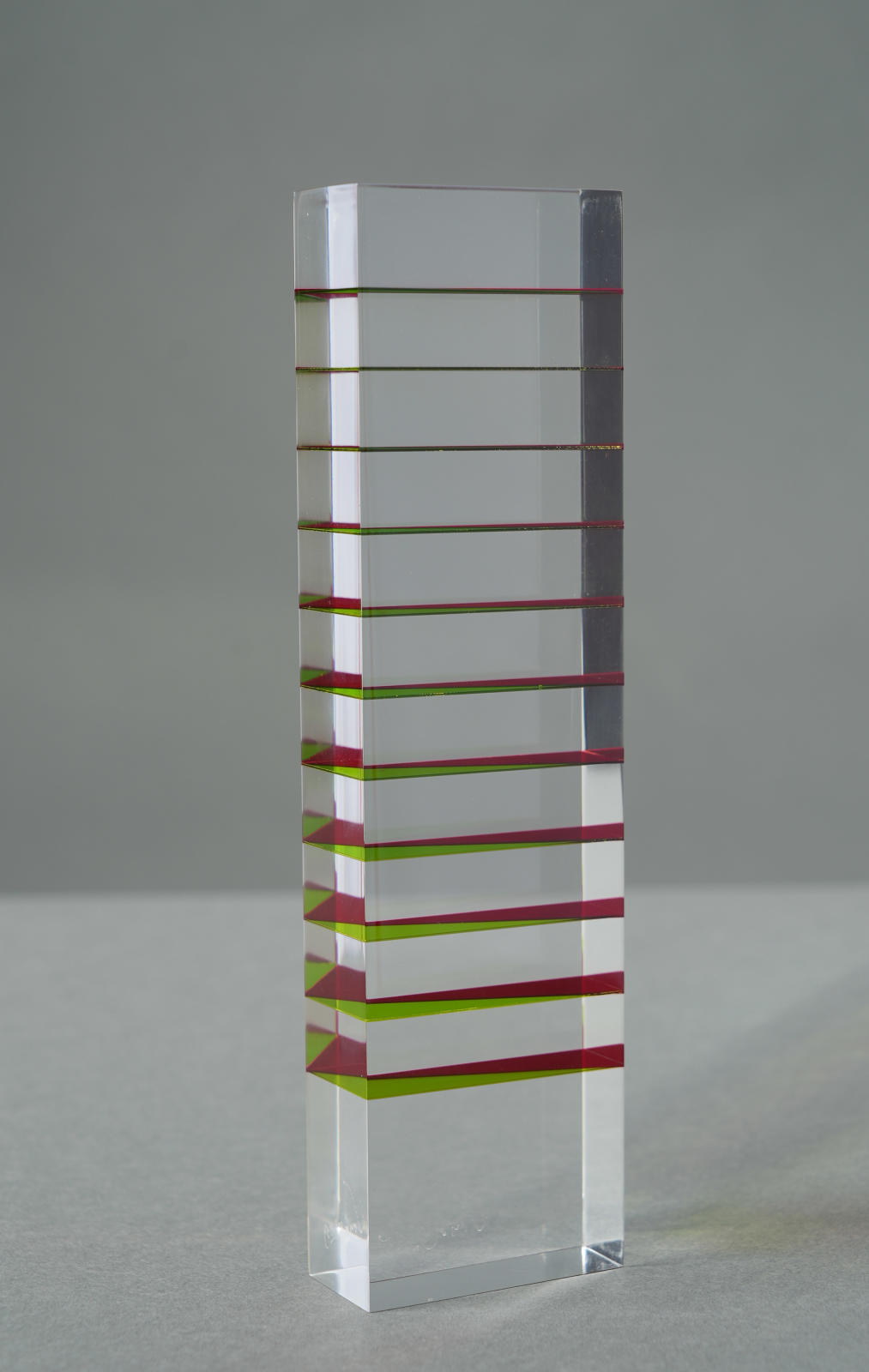







artist
Academically trained as a painter, Vasa Mihich originally taught theories of color as a senior Professor of Design at the University of California, Los Angeles. The octogenarian artist has been creating his striking transparent plastics since the late 1960’s in his Los Angeles studio and continues to this day to be a forward-thinking innovator.
Mihich continues to explore the possibilities and development of these cast acrylic sculptures and their accompanying medium. Henry Seldis, the former art critic for the Los Angeles Times, refers to Mihich as “the most sensuous and sensational colorist of the Southern California artists working in plastic.”
Description
I am working with mechanically applied industrial finishes, because no classical medium can give me this fine surface. Through this process I am eliminating the presence of the artist in his work, leaving only the idea and the concept to be experienced by the observer without other distractions.
-Vasa Mihich
Academically trained as a painter, Vasa Mihich originally taught theories of color as a senior Professor of Design at the University of California, Los Angeles. The octogenarian artist has been creating his striking transparent plastics since the late 1960’s in his Los Angelos studio and continues to this day to be a forward-thinking innovator.
Academic theories of color and space influenced Mihich’s creation of acrylic sculptures, which both reflect and refract the light. To create his minimalistic sculptures, the artist first casts acrylic in large forms of varying thicknesses, often interleaved with layers of clear acrylic and transparent polychromed sheets, cutting them into the desired dimensions. Laminations are made with a polymerized adhesive known as “Weld-On 40”. This “glue-like adhesive” must be quickly applied – sometimes in less than 20 minutes. Then the parts are “machined” and polished to a smooth finish. As Mihich explains:
“Suspending transparent layers of color in open space suited me, though it created complex technical tasks. I resigned myself to time-consuming issues such as laminating the plastic layers, machining, and polishing, and was fulfilled by the resulting work. Initially, I had planned to dedicate three to four years to working with acrylic, but forty years later, I am still working in this medium.”
Mihich continues to explore the possibilities and development of these cast acrylic sculptures and their accompanying medium. Henry Seldis, the former art critic for the Los Angeles Times, refers to Mihich as “the most sensuous and sensational colorist of the Southern California artists working in plastic.”







